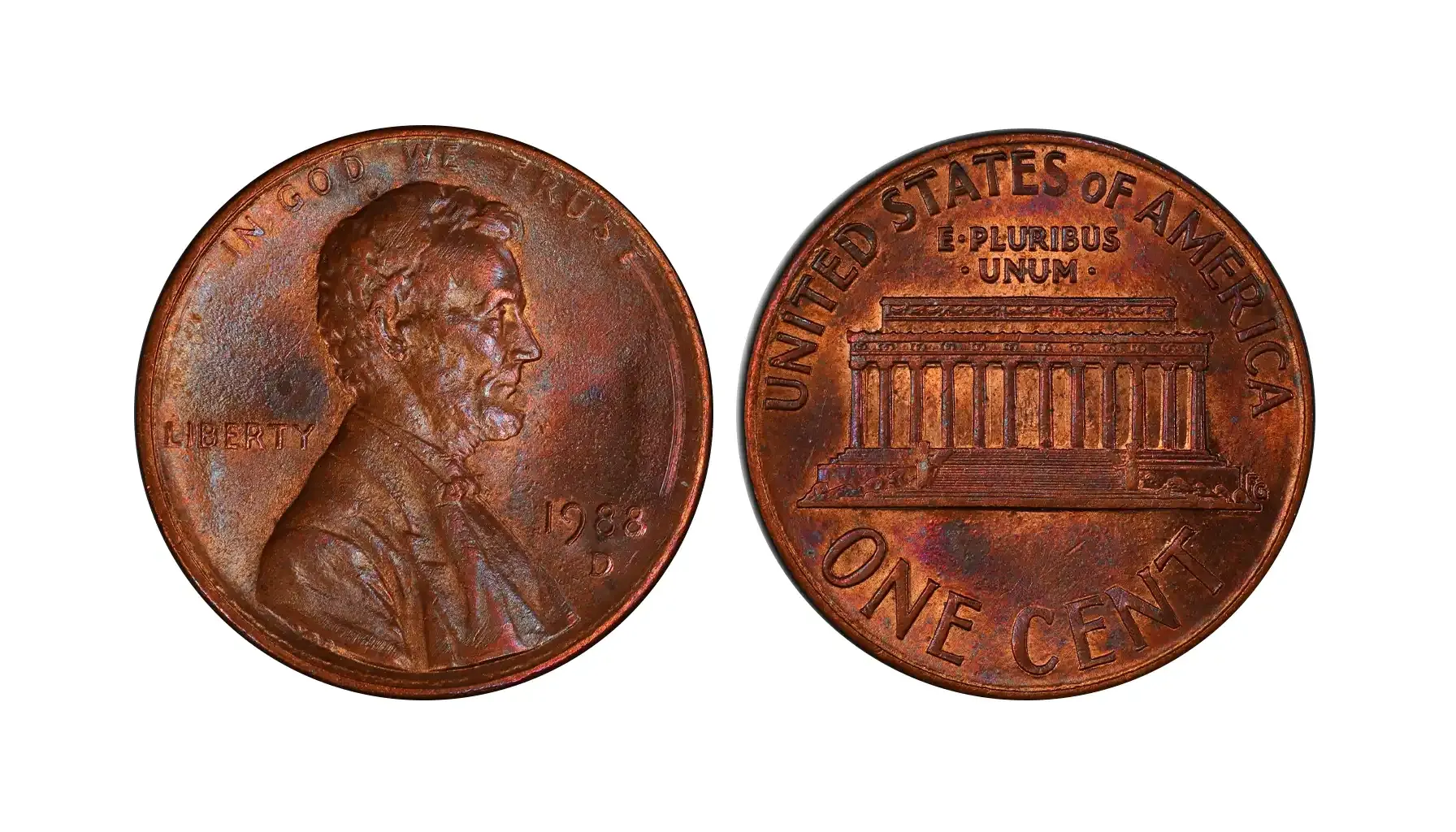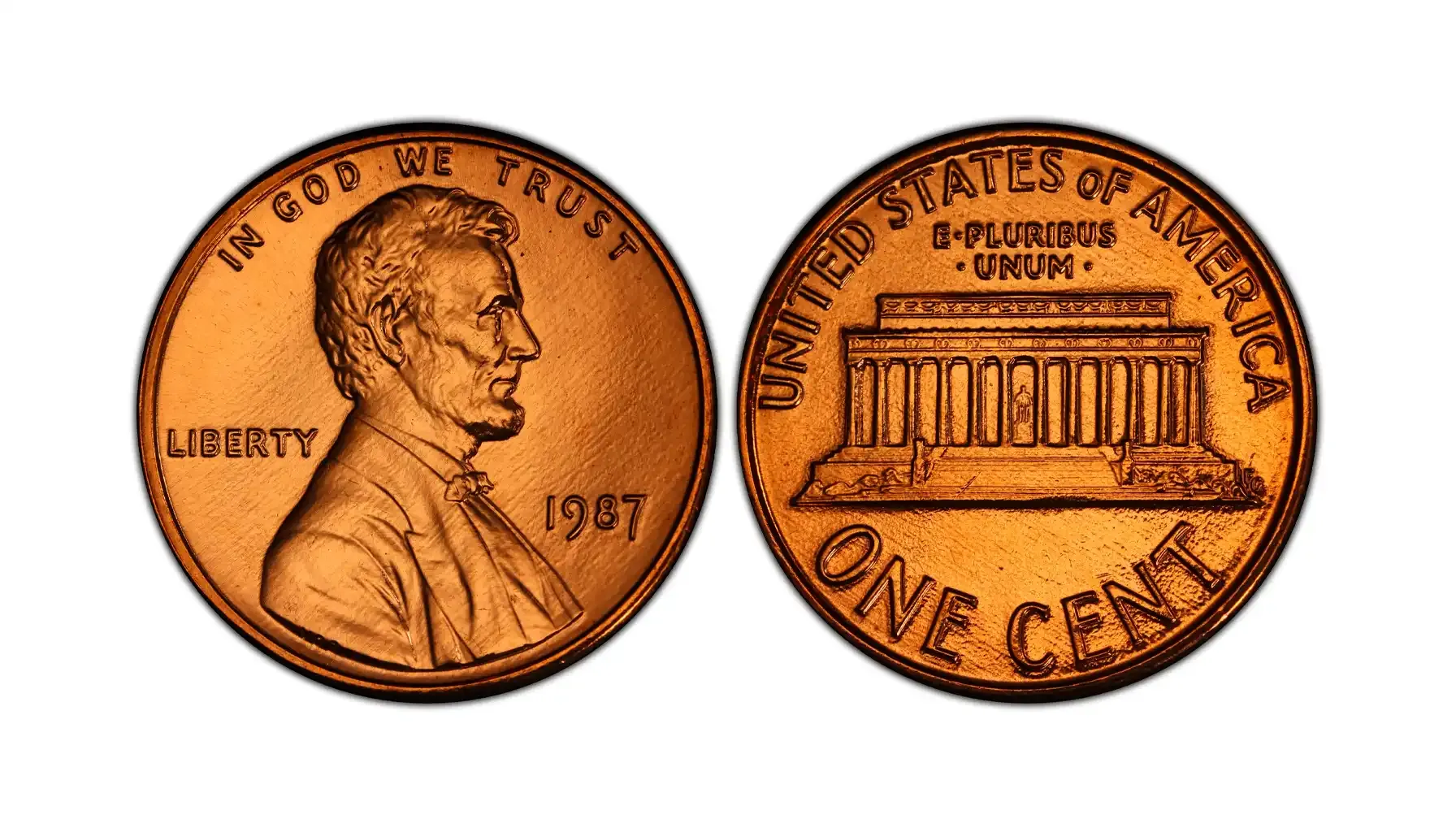Contents:
Bullion coins are some of the greatest tools for investment – they do embrace two distinct characteristics, i.e., the value of precious metals and the governmentally approved status as legal tender. However, not all numismatic creations have been issued under the initiative of pure collecting or investment motives. In some cases, they happen to be considered the result of laundering or the official funding realization.
The 1986 silver American Eagle is the first official bullion coin released by the US Mint that has set a standard for modern silver investment coins not only in the United States but worldwide. The problem of its appearance (ambivalence intended) and value lies in the historical context and features that identify this coin as unique. So, how much does it cost in 2025, and is it worth keeping?

The History of the 1986 American Silver Eagle
Silver Eagle is the series that can be honorably named the most popular silver bullion coin program in the world, with its distinct representatives issued each year since its debut. However, the path to its release was quite long and tortuous. By the 1970s and early 1980s, the US government faced a seemingly strange problem – the redundancy of silver in the Defense National Stockpile.
Since silver has been seen as a strategic asset, it was preserved in enormous quantities, which made silver rates volatile. The production had slowed, and the demand had fallen – there were hundreds of millions of ounces of underutilized silver, which was too valuable to waste but too unreasonable to keep. The idea was to find an appropriate way to monetize this surplus and stabilize the precious metals market, having been authorized by the Liberty Coin Act of 1985.
This is how the US Mint came up with the idea of bullion coins. The first instances were struck in October 1986 in two variations, i.e., a regular version and a proof one. Both contained one troy ounce of .999 fine silver and a face value of $1, yet the real worth could be only determined by the current market silver rates.
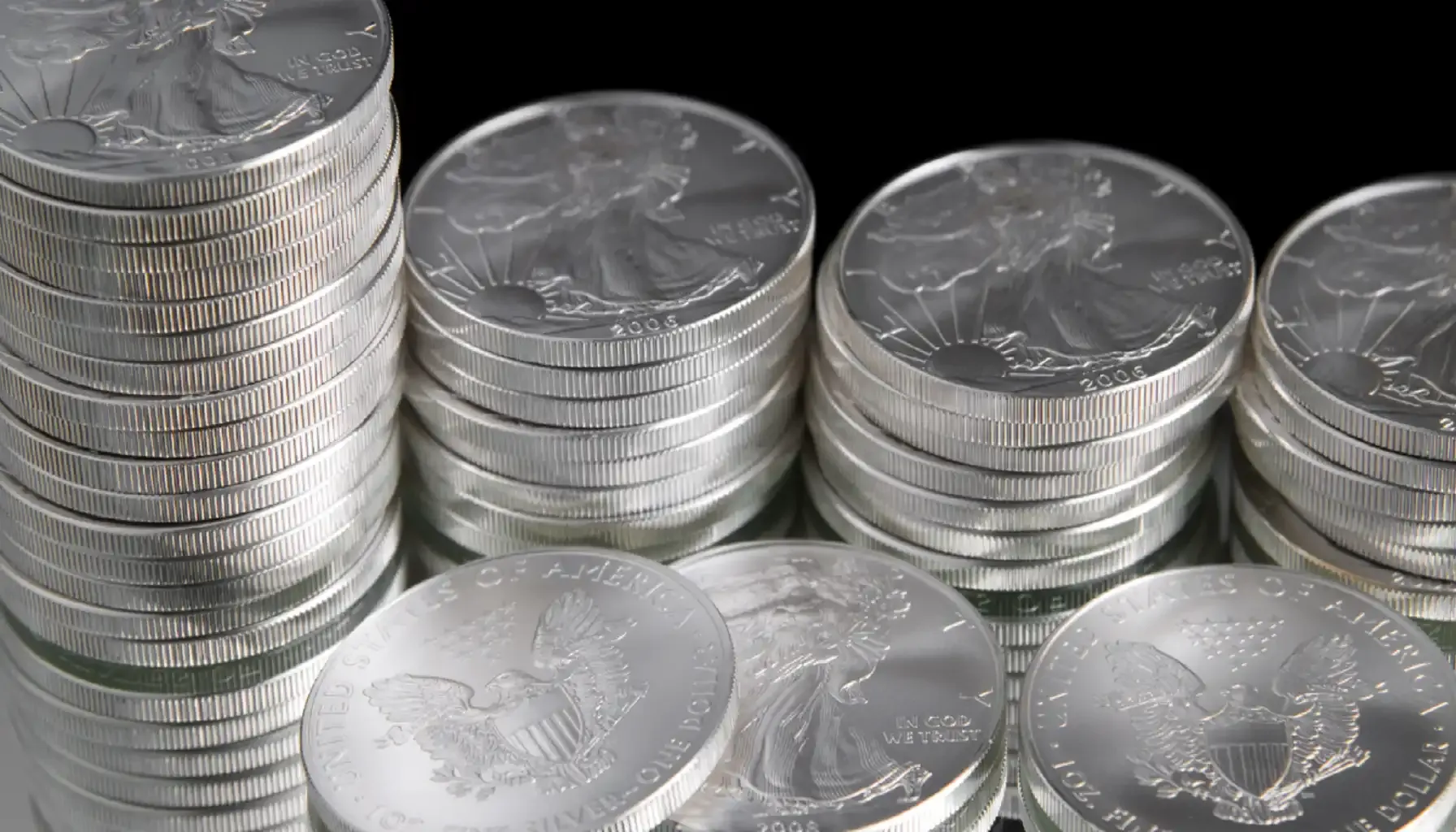
Related article: Silver Eagle Production by Year: Figures of Value & Mintages
Design and Physical Characteristics
Obverse: The obverse features the iconic Walking Liberty striding toward the sunrise, draped in the American flag, with a laurel and oak branches in her hands, by Adolph A. Weinman, originally used on the half dollar from 1916 to 1947. As for the inscriptions, this side bears the words “LIBERTY” arched above, the motto “IN GOD WE TRUST” to the right of Liberty, and the date “1986” beneath.
Reverse: The reverse, on its part, was created by John Mercanti, the US Mint’s 12th Chief Engraver, and it depicts a heraldic eagle behind a shield, clutching an olive branch in the right talon and arrows in the left, along with 13 stars above the eagle, representing the original colonies, the inscriptions “UNITED STATES OF AMERICA” at the top edge, “1 OZ. FINE SILVER~ONE DOLLAR” along the bottom rim, and “E PLURIBUS UNUM” on a banner held in the eagle’s beak.
The Main Characteristics of the 1986 Silver Eagle Coin | |
Composition | 99.93% silver, .007% copper |
Silver Content | 1 troy ounce |
Weight | 31.101 grams |
Diameter | 40.6 mm (1.598 inches) |
Thickness | 2.98 mm (0.117 inches) |
Edge | Reeded |
Face Value | $1 |
Why It Is Considered a Key Date
The key date status is always about prestige and reputation. The origin makes it a genuine treasure of the series, the foundation that may become the center of any collection with values that only grow.
First-Year Status: Collectors consider the first-year issues a premium, and the Silver Eagle 1986 is no exception.
Mintage Was Relatively Low: When compared to other modern coins (that may be issued in billions of copies), 5,393,005 and 1,446,778 instances seem scarce.
Grading Challenges: Early Silver Eagles often suffer from toning, milk spots, or minor imperfections. This makes top-condition examples harder to find and more desirable to obtain.
Institutional Demand: Last but not least, the 1986 coin is foundational to the Silver Eagle series, and it is heavily sought after by both private collectors and investment firms who are looking to offer “complete year sets”. As time goes on, the demand never drops anyway.
Mintage & Types by Mint
1986 $1 Silver Eagle (Regular Strike)
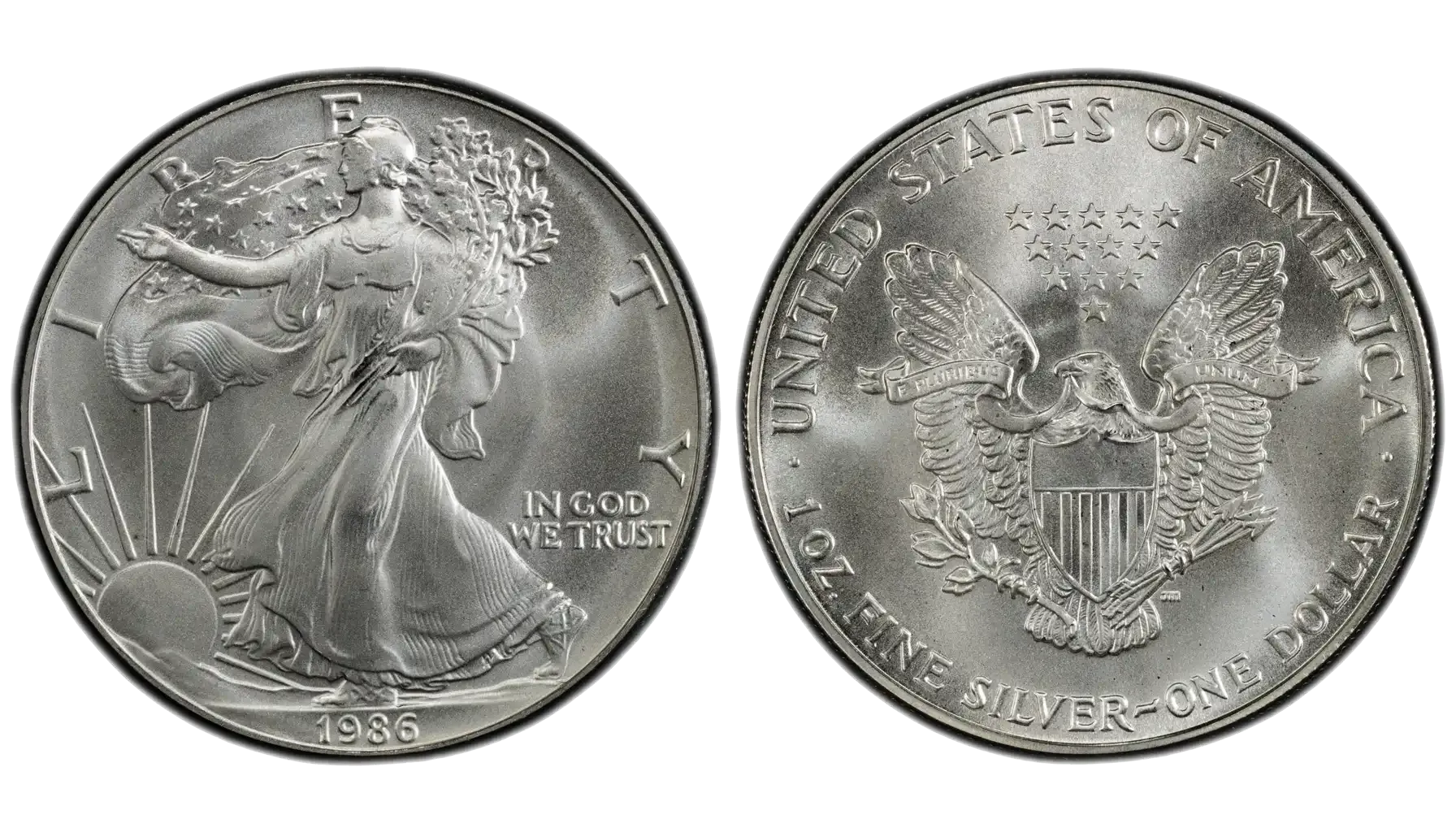
Produced by: Philadelphia Mint
Mintage: 5,393,005
Designations: MS (Mint State), PL (Prooflike)
Auction Record: $21,150 for an MS70
The regular strike 1986 Silver Eagle became the debut of the series, struck without a mintmark and aimed primarily at bullion investors. High-grade examples remain in strong demand, especially those graded MS70 by PCGS or NGC agencies.
1986-S $1 Silver Eagle (Proof)
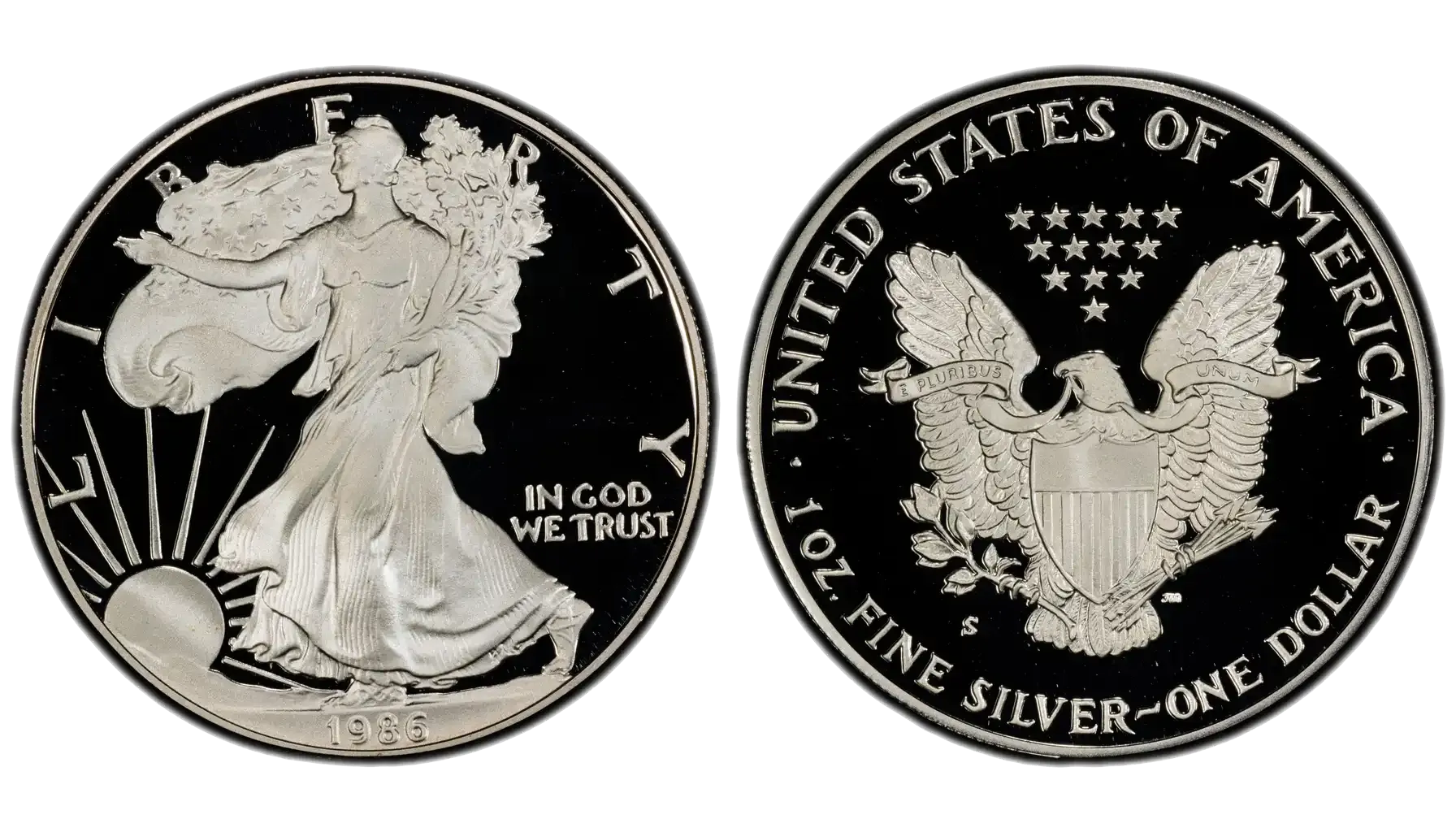
Produced by: San Francisco Mint
Mintage: 1,446,778
Designations: PR (Proof), DCAM (Deep Cameo)
Auction Record: $16,115 for a PR70
The proof version was minted specifically for collectors, featuring a mirror-like field and frosted design elements. This variety, unlike its regular-issue counterpart, was struck at the San Francisco Mint with an “S” mintmark, indicating the place of its origin. As for the 1986 proof silver eagle value, even for raw examples, collectors are ready to pay way more than their face value and intrinsic worth.
The 1986 American Eagle Silver Dollar Value Breakdown
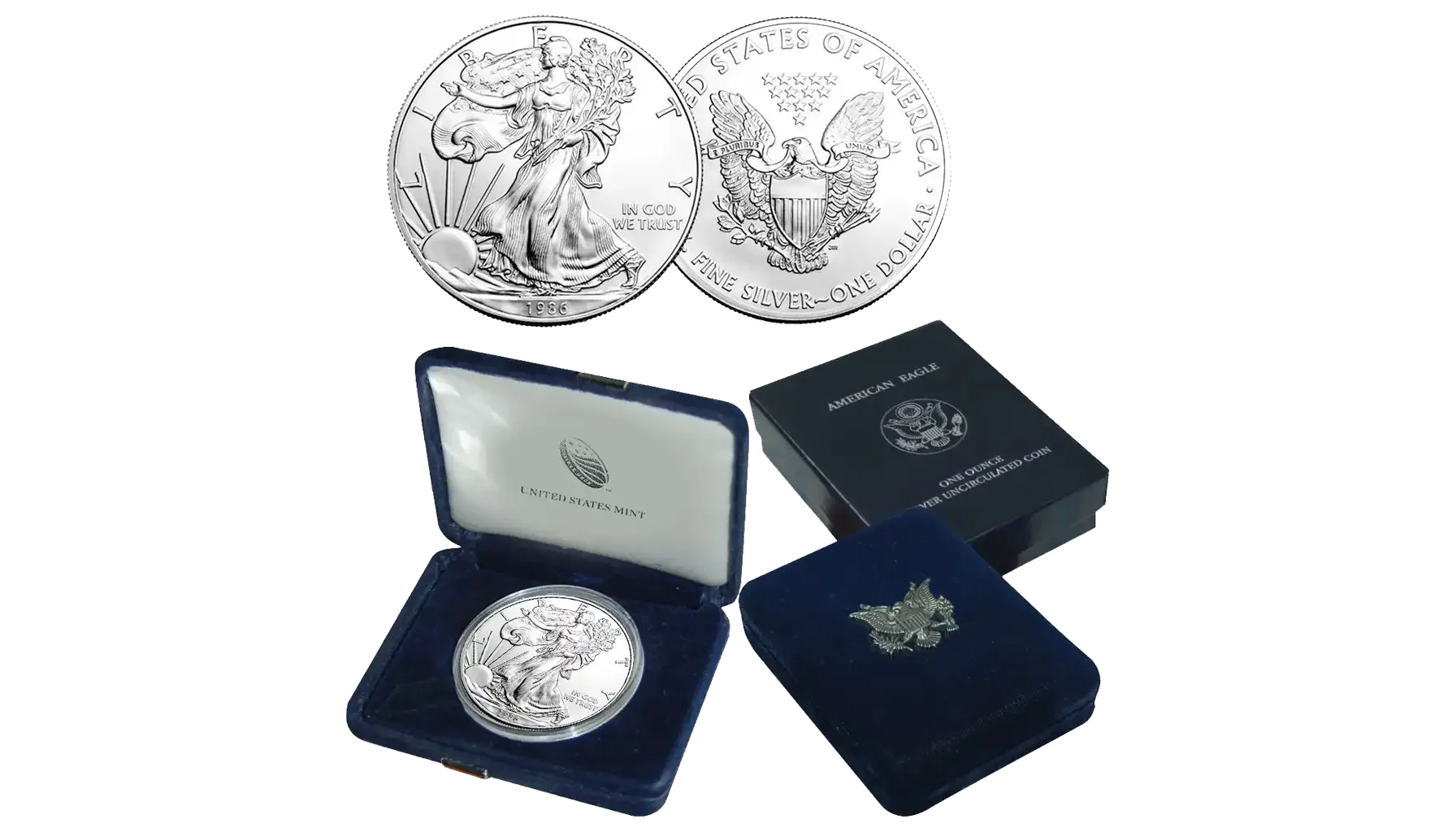
The 1986 American Silver Eagle value is a complex variable that mainly depends on the condition of the coin and the current price of silver. When lower grades, these are traded close to their intrinsic silver value, yet premium versions can command thousands at the most popular auction platforms for numismatists.
What about the silver melt calculations? Here is the formula:
Melt Value = Spot Price of Silver × Silver Content in Troy Ounces
Since each silver eagle contains exactly 1 troy ounce of .999 fine silver, the calculation should be straightforward:
$34.54 × 1 = $34.54
However, this would not be so simple if collectors did not rely on the grading system as well. Below is the value table by type and grade any numismatist should be aware of:
Coin Type | Grade Range | Typical Value Range |
1986 $1 Silver Eagle
| Circulated/Raw | $35 – $45 (near melt value) |
MS60–MS64 | $50 – $70 | |
MS65–MS69 | $75 – $200 | |
MS70 | $1,200 – $2,500 (record: $21,150) | |
1986-S $1 Silver Eagle
| PR60–PR68 | $40 – $80 |
PR69 DCAM | $90 – $150 | |
PR70 DCAM | $500 – $1,200 (record: $16,115) |
*Note that prices are subject to change. Should you wish to check relevant data, please consult additional resources like Coin ID Scanner, i.e., a universal numismatic tool that enables quick coin identification, error detection, collection management, market analysis, and even more.
Valuable Errors and Rare Finds
When it comes to unique, exclusive varieties, one should definitely think of error coins. As such, these usually appear in limited quantities (if not in single versions) and may boost the value for good. So, which errors to look for, and how to identify them on the spot?
Struck-Through Obverse & Reverse Fibers
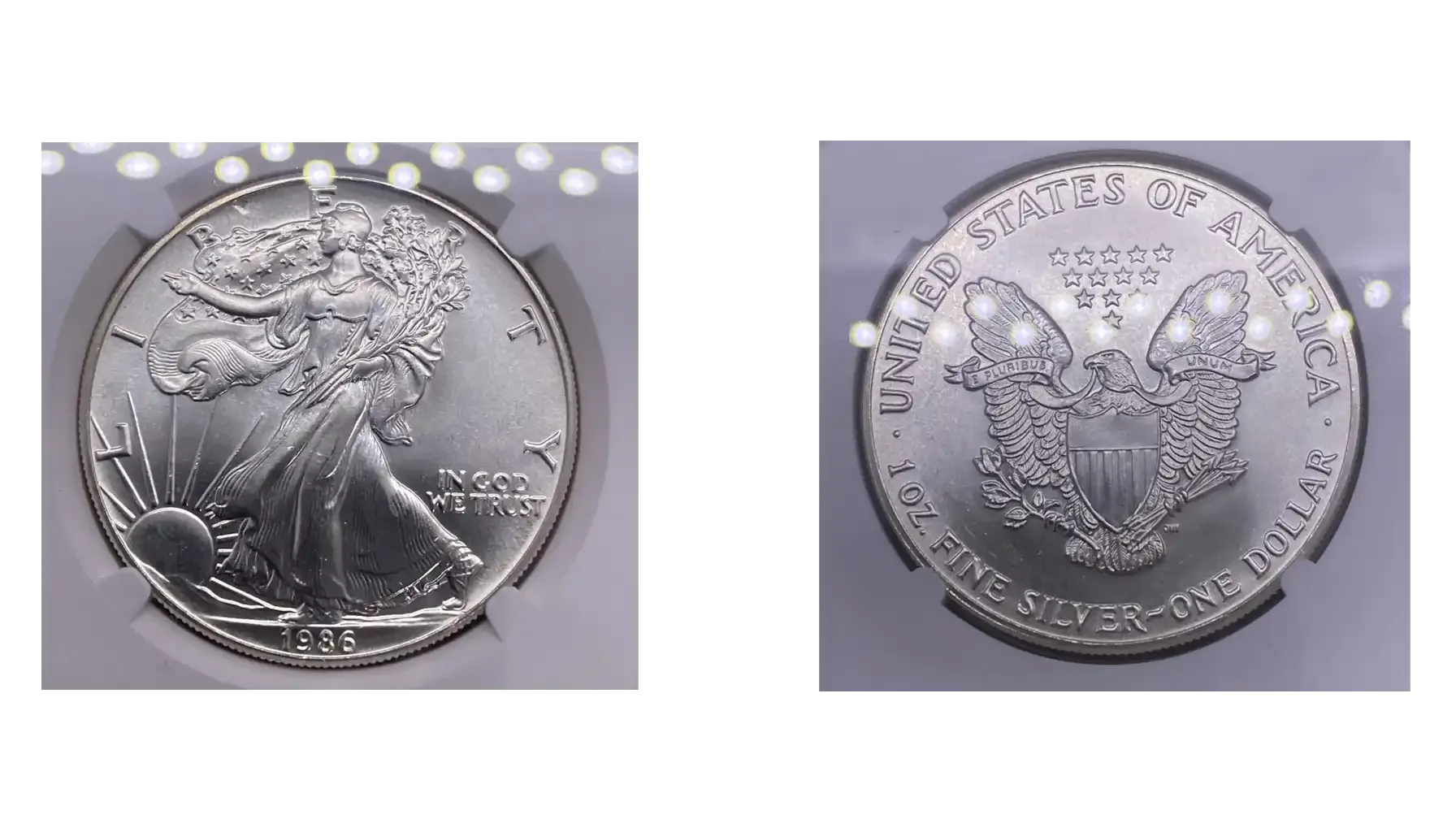
Estimated Value: $270
Although there exist only a few deviations that can be found in the series. In particular, this error occurs when foreign materials, like fibers or threads, are accidentally pressed into the planchet during striking. This results in an uneven or indented surface with visible impressions that distort the design.
How to Identify: Look for small, irregular disruptions or depressions on both the obverse and reverse.
Planchet Thickness Anomaly (Overweight Coin)
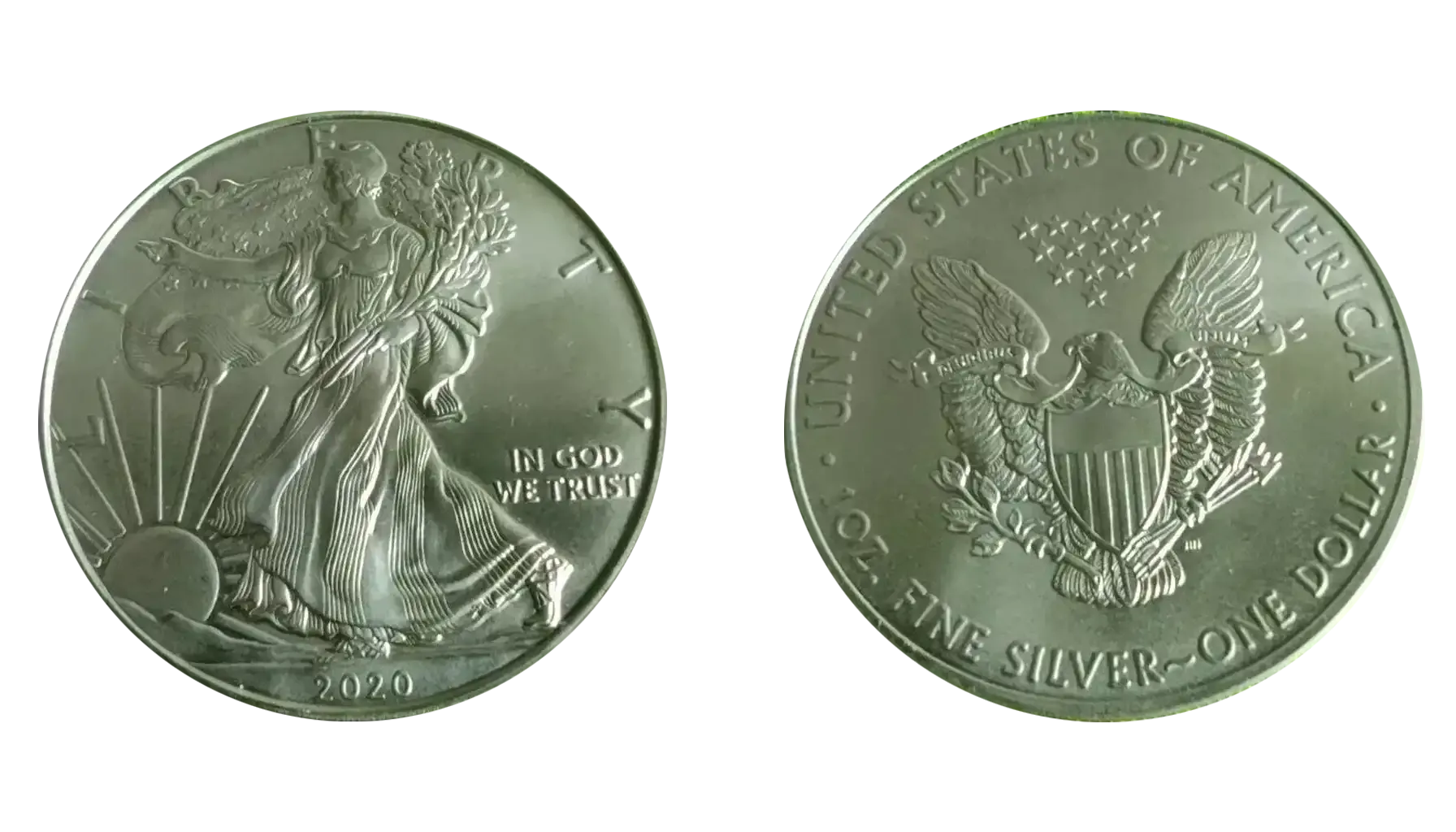
Estimated Value: $100
When a blank (planchet) is slightly thicker than standard, there might appear a heavier-than-usual coin. Although these flaws are generally left unnoticed, with proper preparation and attention to detail, one may easily spot something unusual about the coin they hold.
How to Identify: Check the weight of the coin: while the standard weight is 31.101 grams, there might be spotted noticeable deviations that are not normal for coin production at the time.
Related article: Treasures in Flaws: Most Valuable Error Coins in Circulation
Is Now a Good Time to Buy?
Bullion coins, especially those released at the dawn of the series, are fine investment assets that can bring wealth even when the face value does not provide anything special. The 1986 silver eagle is a decent choice, for it holds both sentimental and market-driven significance.
Current silver spot price, the aura created around these coins, and the relative market stability make silver eagles a target that is expected to increase in value over time.
In summary: Should you value legacy, liquidity, and lasting appeal, the hero of the article is still a smart acquisition. Remember: buy from trusted dealers, watch the silver market, and collect with both your heart and your head.


